#post war german cinema
Explore tagged Tumblr posts
Photo

#Romy Schneider#german cinema#new german cinema#post war german cinema#western european#Austria#Germany#bnw#portrait#woman#photography
4 notes
·
View notes
Text


Karl Hugo Schmölz, "Kinosäle" - Cinema Halls, 1950s, Germany. Big Picture: Capitol-Theater, Dortmund, 1950. Gangolf-Lichtspiele, Bonn, 1951, Kino Etzelkaserne, Köln, 1953, Regina-Lichtspiele in Gelsenkirchen, 1957, Kino in Mariadorf, 1954. Source: Ruhrmuseum, Galerie van der Grinten
#photography#cinema#vintage cinema#interior design#architecture#black and white#german photographer#post-war period
3 notes
·
View notes
Text
youtube
The History of Horror Movies Part 1: The Silent era/early Gothic Monsters
Sub to my channel for more and to access channel memberships: https://www.youtube.com/@borednow5838/videos
@sulietsexual @historyofhorrorfilms @gothic @silentmovies.
#history of movies#silent movies#gothic horror#monsters#dracula#nosferatu#post war#politics#history#german expressionism#black and white#gothic castle#eerie#witches#goblins#demons#ghosts#documentary#youtube#1890s#early 1900s#1930s film#1920s cinema#1940s#werner herzog#german cinema#what we do in the shadows#Youtube
3 notes
·
View notes
Text
Before "horror" was even a thing, The Cabinet of Dr. Caligari (1920) emerged as what many consider the first true horror film. Born out of the shadowy realm of German Expressionism—a movement that thrived before World War I and peaked in the 1920s—this film wasn’t just about scares; it was about feeling.
Okay, so there’s this creepy hypnotist, Dr. Caligari, who controls a sleepwalking guy named Cesare. Caligari uses Cesare to commit murders, freaking out the whole town. A guy named Francis investigates, but the line between reality and madness completely blurs. The film’s got this unsettling, dreamlike vibe thanks to its super creepy Expressionist style, and it’s rightly hailed as one of the first horror films ever made.
The sets? Wildly unrealistic, with jagged, impossible angles and surreal designs painted directly onto walls and floors to mimic light, shadow, and objects. It wasn’t about showing the world as it was but as it felt—a distorted mirror of the inner emotional chaos of a post-war psyche. The themes? Madness, betrayal, insanity—essentially, the intellectual aftershocks of living through the horrors of World War I.
And honestly, it’s crazy how modern this film feels despite having been released over a hundred years ago. While most films from this era don’t exactly resonate with today’s audiences, Caligari somehow manages to translate—its eerie visuals and psychological depth still hit hard, proving that true horror transcends time. If you fell in love with the simplicity and utter gothic terror of Nosferatu, then you’ll love this film as well.
#expressionism #germanexpressionism
#film #cinema #cinephilecommunity #film #trainspotting #moviescenes #filmmaker #filmmaking #theacademy #cinematography #filmmakers #movie #cinephile #cinephiles
#expressionism#german expressionism#nosferatu#films#film#cinephile#horror films#horror history#classic movies#classic film#goth#gothic#halloween
14 notes
·
View notes
Text
So I saw this post about how in the books, Dracula is actually an old man and I always imagined Dracula looked like older Christopher Lee, who played him while he was a kid. While looking him up I accidentally discovered that Christopher Lee was the coolest person in the universe and there is a non-zero chance he was actually Dracula in real life

Sir Christopher Frank Carandini Lee CBE CStJ (May 27th 1922 - June 7th 2015), Sir because he was knighted in 2009 for his charity and his contributions to cinema
So first of all, I saw that he actually knew 8 LANGUAGES (English, Spanish, French, Swedish, Italian, German, Russian and Greek) and was also a staggering 6 feet 5 inches in height. Born in Belgravia in London, one of the most Dracula sounding places I’ve ever heard of, here’s some insane facts about him
•His father, Lieutenant Colonel Geoffrey Trollope Lee of the 60th King's Royal Rifle Corps, fought in the Boer War and World War 1
•His mother, Countess Estelle Marie (née Carandini di Sarzano) was an Edwardian beauty who was painted by Sir John Lavery, Oswald Birley, and Olive Snell, and sculpted by Clare Sheridan
•Lee's maternal great-grandfather, Jerome Carandini, the Marquis of Sarzano, was an Italian political refugee
•Jerome’s wife was English-born opera singer Marie Carandini (née Burgess), meaning that Lee is also related to famous opera singer Rosina Palmer
•His parents would divorce when he was four and his mother would marry Harcourt George St-Croix Rose, banker and uncle of Ian Fleming, making the author of the James Bond books Lee’s step cousin. Fleming would then offer him two roles as the antagonist in the film adaptations of his books, though he was only able to land the antagonist role in The Man With the Golden Gun. It’s believed his role in the film is significantly better and more complex than his book counterpart, played as “a dark side of Bond”
•His family would move and they lived next door to famous silent film actor Eric Maturin
•One night, before he was even 9 years old, he was introduced to Prince Yusupov and Grand Duke Dmitri Pavlovich, THE ASSASSINS OF GRIGORI RASPUTIN, WHOM LEE WOULD GO ON TO PLAY MANY YEARS LATER
•Lee applied for a scholarship to Eton, where his interview was in the presence of the ghost story author M.R. James, who is considered one of the best English language ghost story writers in history and who widely influenced modern horror
•He only missed by King’s Scholar by one place by being bad at math, one of the only flaws God gave him
•Due to lack of working opportunities, Lee was sent to the French Riviera and stayed with his sister and her friends while she was on holiday, and on the way there he stopped briefly in Paris with journalist Webb Miller, a friend of his step father. Webb Miller was an American journalist and war correspondent and was nominated for a Pulitzer Prize for his coverage of the execution of the French serial killer Henri Désiré Landru, also known as BLUEBEARD. He also helped turn world opinion against British colonial rule of India
•While staying with Miller he witnessed Eugen Weidmann’s execution by guillotine, the last public execution ever performed in France
•Arriving in Menton, Lee stayed with the Russian Mazirov family, living among exiled princely families
•When World War 2 began, Lee volunteered to fight for the Finnish Army against the Soviet Union in the Winter War, and a year later, Lee would join the Home Guard. After his father died, he would join the Royal Air Force and was an intelligence officer and leading aircraft man and would later retire as a flight lieutenant in 1946
•While spending some time on leave in Naples, Lee climbed Mount Vesuvius, which erupted only three days later
•After nearly dying in an assault on Monte Cassino, Lee was able to visit Rome where he met his mother’s cousin Nicolò Carandini, who had fought in the Italian Resistance Movement. Nicolò would later go on to be the Italian Ambassador to Britain. Nicolò was actually the one to convince Lee to become an actor in the first place
•Oh yeah Christopher Lee was seconded to the Central Registry of War Criminals and Security Suspects where he was tasked with HELPING TRACK DOWN NAZI WAR CRIMINALS
•Lee’s stepfather served as a captain in the Intelligence Corps
•He was actually told he was too tall to be an actor, though that would honestly help him considering one of his first roles was as The Creature in The Curse of Frankenstein
•He was cast in Captain Horatio Hornblower R.N (1951) as a Spanish captain due to not only his fluency in Spanish but also he knew how to fence!
•Lee’s portrayal of Dracula had a crucial aspect of it which Bela Lugosi’s didn’t have: sexuality, a prime aspect of the original novels.
•While being trapped into playing Dracula under Hammer Film Productions, Lee actually hated the script so much that he would try his best to sneak actual lines from the original novel into the script
•Ironically, he was rejected from playing in The Longest Day because “he didn’t look like a military man”
•Christopher Lee was friends with author Dennis Wheatley, who “was responsible for bringing the occult into him”. He would go on to play in two film adaptations of his novels
•His biggest regret in his career is not taking the role of Sam Loomis from Halloween when offered to him
•Christopher Lee was the only person involved with the Lord of the Rings movies to have actually met J.R.R Tolkien
•When playing Count Dooku, he actually did most of the swordsmanship himself
•Christopher Lee was the second oldest living performer to enter the Billboard Top 100 charts with the song “Jingle Hell” at 91 years old. After media attention, he would get No. 18, and Lee became the oldest person to ever hit the Billboard Top 20 chart
I really am leaving some stuff out here and I may go on
#christopher lee#dracula#dracula by bram stoker#frankensteins creature#adam frankenstein#frankenstein#lord of the rings#star wars#count dooku#saruman#james bond#ian fleming
34 notes
·
View notes
Text
intro post ⭐️
welcome :)
i used to be a german law student, but then i quit on a random tuesday & now i'm a full time fangirl until i go back to uni in october 2025!! my goal until then is to finish writing some long fics, but i'm a world class procrastinator so i can't promise anything.
💜fandoms💜
marvel (mostly mcu but i'm slowly working through some comics)
x-men
harry potter (both golden trio & marauders, although i'll always be more of a golden trio girly)
star wars (mostly og trilogy & mandalorian)
arcane
good omens (fuck neil gaiman)
our flag means death
IT
sherlock
-> i also started watching supernatural for the first time, so i'll probably talk about that as well, but pleeeease don't spoiler <3
��ships💜
winterhawk
drarry
stony
dinluke
reddie
ineffable husbands
caitvi
gentlebeard
wolfstar
cherik
poolverine
any wlw ship that involves natasha romanoff but especially maria/nat/pepper
-> i'm a multishipper though, so you can pretty much talk to me about any ship, i can enjoy almost anything!! these are just my favs <3
the only exception is winterhawk, they're my absolute otp and i can't stand one of them being with someone else so please no ships involving clint and/or bucky except for winterhawk! especially no stucky.
💜other shows/movies i really like💜
how i met your mother, interstellar, shameless, hamilton, newsies, cats the musical, little women, httyd, dreamworks movies in general, disney animation, 10 things i hate about you, fleabag, scorpion, kingsman, the parent trap, dance academy, bojack horseman, she-ra, and a lot more !!
💜random things i love💜
coffee (comes with being a hawkeye stan)
the color purple (comes with being a hawkeye stan)
pizza (comes with being a hawkeye stan)
green day
hozier
crocheting
funko pops
paulaner spezi
buying books & never reading them
cowboy like me by taylor swift
long hair bucky barnes
covering every inch of my room with posters & stickers
baggy pants
going to the cinema
long walks
all kinds of birds but especiall chickens & pigeons
most of my tags are pretty self explanatory i think, #tweet people w kindness has everything about my twitter fic and #first light everything about the winterhawk interstellar au i'm currently working on!
proshippers pls interact <3
#winterhawk#clint barton#my fics#poolverine#deadpool and wolverine#ao3#law school#marvel#tweet people w kindness#marvel comics#comics#x men#x men comics#avengers#taylor swift#letterboxd#amy talks#cherik#other people‘s art
24 notes
·
View notes
Text
ty ty my friend 🧡 @therearepeoplewho
Last song you listened to: what comes after the blues by magnolia electric co.
Last movie you watched: Key Largo dir. John Huston
Last show watched: dandadan, the righteous gemstones
Currently reading: Is this even a legitimate question at this point for me lol. I read so slow and won't touch anything for months. Last thing I skimmed was The Body Populace: Military Statistics and Demography in Europe before the First World War by Heinrich Hartmann
Current obsession: Cats. I don't know. My ever lingering interest in wwii. The German perspective, the civilian perspective, society both Western and Eastern and the response to it. Social culture in Germany from 1910ish to 1960ish. Ripuarian dialects (which I can barely research because my German is ridiculously poor and subpar at best). Sexuality during wartime + post war Europe. The loss of niche cultures and dialects in post war Europe. How Germany and Europe have reconciled with the past + how it hasn't. The connection between everything sociological and anthropological past and present and how it makes me feel totally unhinged.
More distantly and faintly because I can only have One Obsession to dedicate myself to in this lifetime — Japanese folklore, the myth of the 'American' cowboy in modern memory and the exaggeration. Twentieth century industrialization and loss. Italian Mafia both in Italy and the US. Werewolf lore. Cinema as a whole esp the birth of it up through the early 90s.
do it if you want etc etc: @antiquesintheattic, @poughkeepsietapes, @junkmanserenade, @theamericanfriend1977, @brucespringsteen, @bookendsguy, @hoppkorv, @rottenarmour, whoever else wants to!
9 notes
·
View notes
Text
One of Russia’s most famous 20th-century novels has returned to the Silver Screen. Infamously difficult to capture as a motion picture (more mystical observers even speak of a curse), Mikhail Bulgakov’s “The Master and Margarita” is back, reinterpreted by American-Russian filmmaker Michael Lockshin. The new movie stars Evgeny Tsyganov and Yulia Snigir in the titular roles and features German actor August Diehl (Gestapo major Dieter Hellstrom in Quentin Tarantino’s “Inglourious Basterds”) as the story’s demonic character Woland. Meduza reviews the controversy surrounding the film’s director and funding, the book’s cinematic history, and Lockshin’s adaptation.
The political controversy
Michael Lockshin’s “The Master and Margarita” averages an impressive 7.9/10 rating with more than 43,000 reviews at KinoPoisk and leads Russia’s box office in its opening week after earning 57.3 million rubles ($640,000) on its first day in theaters, but the director was making enemies before his film ever sold a single ticket. Self-described patriots denounce Lockshin as a Russophobe, a traitor, and a neoliberal besmircher of the intrepid Soviet secret police. They call him a hypocrite, too, in light of the fact that this new adaptation of Bulgakov’s classic was made (in 2021, before the full-scale invasion of Ukraine) with 800 million rubles ($8.9 million) from Russia’s Cinema Foundation, the state’s key funding agency for the domestic film industry.
Lockshin, who now resides in the United States, declined to answer Meduza’s questions about the backlash in Russia, saying he’s not yet ready to comment on the situation. On Telegram, pro-war channels have circulated screenshots of Facebook posts that are now hidden from non-friends where Lockshin shared independent reporting about the war in Ukraine, wrote that he’s donated to Ukrainian organizations, warned that future generations of Russians will be paying reparations for the “tragedy they brought to Ukraine,” and compared the Putin regime to Nazism in Germany.
State propagandist Tigran Keosayan has advocated criminal charges against Lockshin, while Trofim Tatarenkov, a host on Russia’s state-run Sputnik radio (who admits that he hasn’t even seen Lockshin’s movie), called the filmmaker “scum” and fondly remembered how such “enemies of the people” were shot during the Stalinist era.
Previous adaptations
In May 2016, poet and literary critic Lev Oborin wrote an essay for Meduza answering several “questions you’re too embarrassed to ask” about Bulgakov’s “The Master and Margarita,” including the most shameful of all: Can I just skip the book and watch a movie version instead? The short answer is, yes, you can always skip the book. In fact, unless you’re a student or some other kind of hostage, you can skip the movies, too. But since you asked, there are at least two previous screen adaptations of “The Master and Margarita” worth knowing about.
The better-liked version, at least until now, has been Yuri Kara’s 207-minute film, made in the mid-1990s but not released until August 2011. Meanwhile, in 2005, Vladimir Bortko created a miniseries for Russian television that was criticized for uneven casting and even worse special effects. Unfortunately for Bortko, the 10 episodes drew deeply unfavorable comparisons to his beloved 1988 adaptation of Bulgakov’s “Heart of a Dog.”
It’s also tempting to contrast Bortko’s miniseries with Kara’s adaptation — particularly how the two portrayed one of the novel’s most visually scandalous scenes: Satan’s Grand Ball. Filmed almost a decade later and made for TV, the sequence in Bortko’s series “looks almost puritanical” compared to Kara’s film, noted Lev Oborin. In raw terms of nudity and violence, this assessment is hard to contest:
youtube
So, is Lockshin’s adaptation any good?
Anton Dolin (a prominent Russian film critic who might be best known to casual Internet users as the interviewer who provoked Ridley Scott into saying, “Sir, fuck you. Fuck you. Thank you very much. Fuck you, go fuck yourself.”) liked Lockshin’s adaptation quite a bit. In a review published by Meduza, Dolin writes that the film “manages to retain the sharpness of the original source, which mocks Soviet power, and at the same time offers the viewer an innovative perspective on a classic text.”
Dolin praises Lockshin’s “Hollywood flourishes” and his capacity to juggle the book’s “genre and intonation incompatibility,” which has plagued past interpretations. The new adaptation brings a “circus element” to the story without sacrificing the script’s “rigidity,” says Dolin, while also “condensing the vastness of Bulgakov's novel into a coherent and clear narrative.” (You’ve been warned, formalists.)
Lockshin’s film takes some liberties with Bulgakov’s classic. For example, in the novel, the Master character doesn’t emerge until the middle of the book, leaving the reader to wonder about the title. In the new film, however, the main plotline belongs to the love story between Margarita Nikolaevna (the unhappily married wife of a Soviet functionary) and a writer she calls the Master. According to Lockshin’s script (which he co-wrote with Roman Kantor), the secondary narrative involving Pontius Pilate’s trial of Yeshua Ha-Notsri (Jesus of Nazareth) is a play within the story written by the Master and pulled from production by Soviet censors after its opening performance. (In a feat of authenticity unprecedented in modern Russian cinema, the Jerusalem scenes, which comprise roughly 10 minutes of the film, are performed in Aramaic and Latin.) Meanwhile, all the adventures across Moscow involving Woland and his entourage are presented as figments of the Master’s imagination as he slowly loses his mind under state persecution.
As Lockshin has argued in comments promoting the movie, Dolin says Bulgakov’s novel enjoys heightened relevance in contemporary Russia, and the new film makes menacing villains of NKVD executioners while presenting even more revolting characters in the Soviet elites whose conformity and hypocrisy enabled the Stalinist regime.
Dolin praises the decision to cast August Diehl as Woland, the mysterious foreigner whose visit to Moscow sets the plot rolling in the novel. Diehl’s Woland “is a real find,” Dolin writes. The German actor plays the character as “an infernally sarcastic gentleman in black” who resembles Satan “more than the thoughtful, sad wisemen from various Russian interpretations of the same character.”
A cartoonishly scary foreigner, complete with a spooky German accent, Woland turns out to be the creation of the writer’s wounded mind, his alter ego, writes Dolin. The censorship and persecution the character faces in the film are a “chilling reproduction” of mechanisms that resonate more in Putinist than Stalinist Russia, Dolin argues, highlighting some lines that wink boldly at modern-day realities, including nods to Crimea, oil production, and military parades.
Lockshin’s adaptation also features a fantastical version of Moscow that recalls the visionary designs of artists in the Higher Art and Technical Studios, which flourished in the 1920s before crumbling under Stalinism. In this universe, Moscow completed the Palace of the Soviets, altering the skyline in a delirious finale that depicts the city ablaze. This scene, in particular, has upset several state propagandists.
Dolin notes that Margarita is absent from the story for much of the film, but she reappears in the final act as a heroine on her own narrative arc. In the character’s scenes as a witch and then a queen, Lockshin’s intentions and the meaning of the novel’s title finally become clear, says Dolin:
It’s not the imagination of the writer that transforms the grim reality but exclusively the emotion that is capable of elevating you to the heavens, of burning cities, and punishing or pardoning with the mere force of thought. In the end, Lockshin’s film is not about Satan, not about Moscow, not about Pilate, and not about totalitarianism, censorship, or creativity, but about love. It alone makes a person invisible and free.
23 notes
·
View notes
Text
Me: Wow, I love the real world cold war influence in Spy x Family. From 60’s design to the political intrigue, it makes it feel so rich in character. And it’s east vs west schlick is feels so alive, clearly taking a lot of influence from post war German cinema—
Loid: *is a veteran*
Me: I love the way this is actually a fictional world with a different history from ours.
#spy x family#it’s like a jump scare every time they talk about ~the war~#I’m constantly on edge for what history will and wont get used here
12 notes
·
View notes
Text









Vera Bach, German actress and singer 1926 - 1989.
Vera Bach: A Brief Filmography
"Whispers of the Rhine" (1941)
Vera Bach made her breakthrough as a wistful romantic lead in this poignant drama set against the backdrop of the Rhine River. Her performance was praised for its emotional depth.
"Starlit Serenade" (1943)
In this musical comedy, Bach showcased her singing talents, playing a nightclub singer who dreams of stardom. The film was a box office success and highlighted her dual talents.
"The Secret Garden" (1944)
A suspenseful thriller where Bach played a mysterious governess with a hidden past. Her performance was noted for its intensity and complexity.
"Echos der Vergangenheit (Echoes of the Past)" (1946)
This historical drama featured Bach as a resilient woman navigating the challenges of post-war Germany. Her role resonated with audiences seeking hope and renewal.
"Waltz of the Shadows" (1949)
A romantic period piece set in 19th-century Vienna, where Bach's character is caught in a web of intrigue and forbidden love. Her portrayal was both elegant and haunting.
Hit Songs:
"Moonlit Dreams"
A dreamy ballad that became synonymous with Bach's ethereal voice, capturing the hearts of many during the war years.
"Flüsternde Winde"
Featured in "Starlit Serenade," this upbeat tune became an anthem of hope and resilience.
"I Guess We'll Never Know"
A melancholic song that reflected the themes of longing and loss, popularized by its inclusion in "Echoes of the Past."
Vera Bach remains an iconic figure of 1940s German cinema, celebrated for her captivating performances and unforgettable music.
2 notes
·
View notes
Text

MARLENE DIETRICH
photographed by John Engstead
Marie Magdalene "Marlene" Dietrich (27 December 1901 – 6 May 1992) was a German and American actress and singer whose career spanned from the 1910s to the 1980s.
In 1920s Berlin, Dietrich performed on the stage and in silent films. Her performance as Lola Lola in Josef von Sternberg's The Blue Angel (1930) brought her international acclaim and a contract with Paramount Pictures. She starred in many Hollywood films, including six iconic roles directed by Sternberg: Morocco (1930) (her only Academy Award nomination), Dishonored (1931), Shanghai Express and Blonde Venus (both 1932), The Scarlet Empress (1934), The Devil Is a Woman (1935). She successfully traded on her glamorous persona and exotic looks, and became one of the era's highest-paid actresses. Throughout World War II, she was a high-profile entertainer in the United States. Although she delivered notable performances in several post-war films, including Billy Wilder's A Foreign Affair (1948), Alfred Hitchcock's Stage Fright (1950), Billy Wilder's Witness for the Prosecution (1957), Orson Welles's Touch of Evil (1958), and Stanley Kramer's Judgment at Nuremberg (1961), she spent most of the 1950s to the 1970s touring the world as a marquee live-show performer.
Dietrich was known for her humanitarian efforts during World War II, housing German and French exiles, providing financial support and even advocating their American citizenship. For her work on improving morale on the front lines during the war, she received several honors from the United States, France, Belgium, and Israel. In 1999, the American Film Institute named Dietrich the ninth greatest female screen legend of classic Hollywood cinema.
4 notes
·
View notes
Text
W1. 10 creatives
1. René Ferracci (1927 - 1982)
Rene Ferracci is a French director, illustrator, and designer. After completing his military service, he became the head of advertising at MGM in 1949. He played a key role in the cinema poster genre, esp within the French cinema world. His designs were a combination of traditional poster design and trends from comics/press illustration at the time. He was also honoured with the César d'honneur in 1986 posthumously, which cemented his legacy.
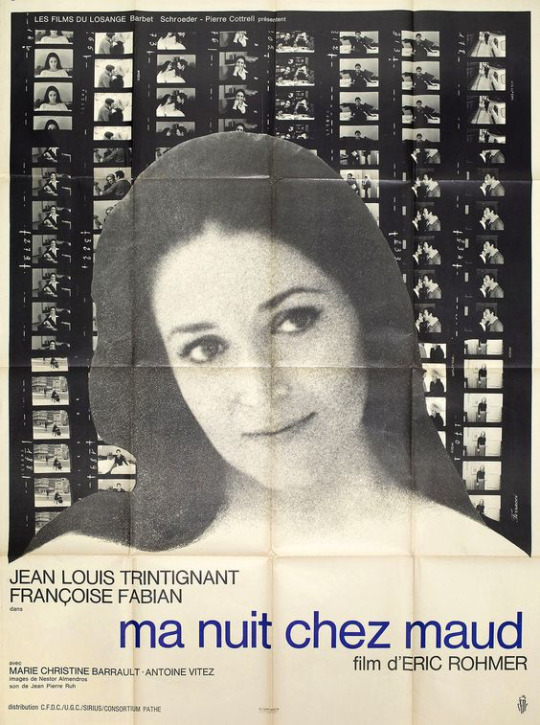

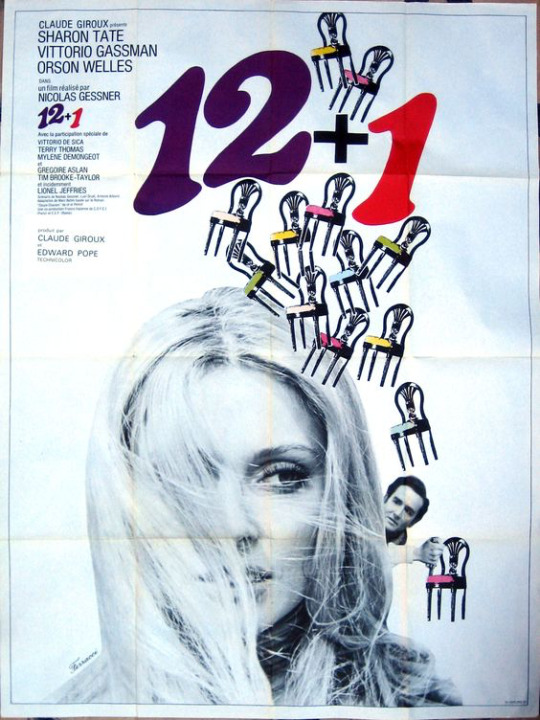
-
2. Denis Dulude
Denis Dulude is a canadian graphic, motion and type designer. Before founding his graphic design studio, he was a ballet dancer for 11 years. He opened the 2Rebels studio in Montreal in 1995 with Fabrizio Gilardino that was sold to Fonthaus in 2007, He got known for his unconventional graphic style, and as such as been on book covers and magazines. He now teaches typography at University of Quebec in Montreal.

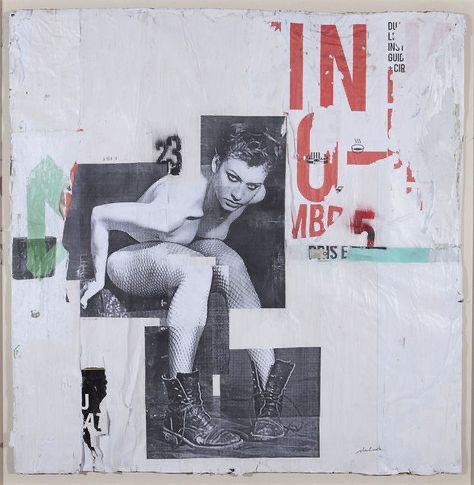
-
3. Hans Hillmann (1925-2014)
Hans Hilman was a german designer of the post-war period. He started his career by working with Walter Kircher who borough art house films to Germany through his company Neue Filmkunst. As such he started designing a lot of movie posters for international films and became known as the founding father of german poster design. Since then he got involved in the magazine and Newspaper design world and has become the art director for many papers. He also taught at the Kassel Design school.



-
4. Elisa Sue Young Park
Elisa Sue Young Park is a photographer and is also known for her depot store ‘sugarcubeshop’ where she sold archival Japanese fashion pieces, as such making her known within the fashion and photography world. She particularly gained traction through her work with Heaven Marc Jacobs, where she is regularly photographed as well as made zines for the company. She is also legal assisting civil rights lawyers in Koreatown and works for a Korean American youth nonprofit organization.
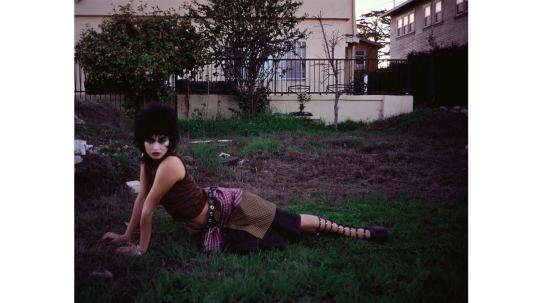
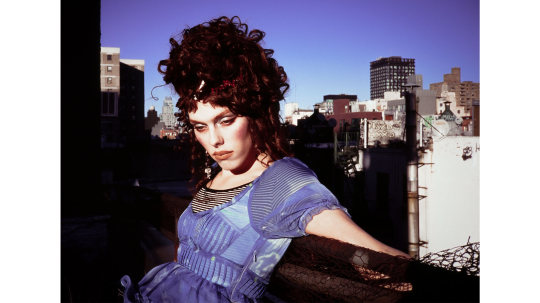
-
5. David Carson (1995 - )
David Carson is a well known graphic designer and art director that rose in popularity in the 1990s as his experimental style changed the world of design. He is claimed as the godfather of ‘grunge typography’ and this can be seen in his work for the magazine ‘Ray Gun’ for which he was the art director. He has also been the art director of the magazine Beach Culture in the past. His work has been characterised by chaotic typography and a ‘disarray of photos overlapping each other’.
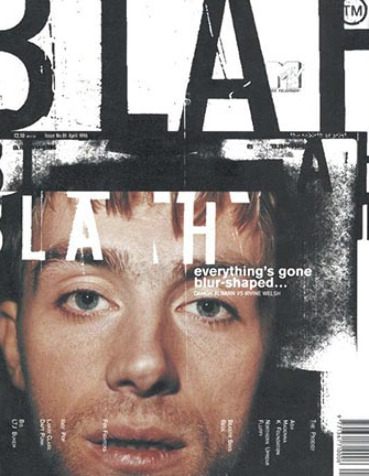

-
6. Lise Sarfati (1958 - )
Lise Sarfati is a French photographer whose work explores the ‘instability of feminine identity’ as a common theme in her photography are young women who resist attempts of being pinned down. Although that is what she is most known for, these days she explores the relationship between people and urban landscape. She has worked a lot in Russia and USA. She traveled across the USA, and documented ‘adolescent’ cities like Austin (TX), Portland (OR), Los Angeles (CA), etc - she named this piece La Vie Nouvelle. Her work tends to follow this process of travel/exploration.
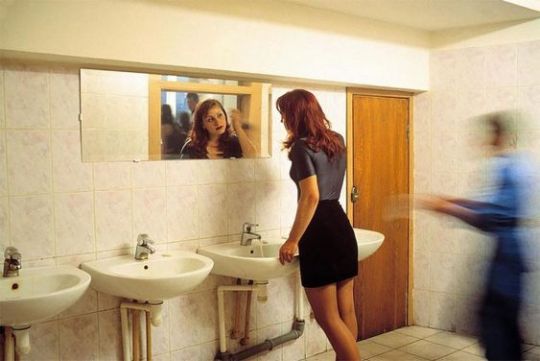

-
7. Paolo Roversi (1947 - )
Paolo Roversi is a fashion photographer known for his ‘intimate and classic’ look. His career started in 1970 with photojournalism but eventually, his interest shifted to fashion and he began to assist Laruence Sackman. He then started shooting fashion and editorials himself which crafted his sought-after image in the fashion world today. He added polaroid photography in the 1980s and it’s been a part of his practice ever since. He has collaborated with leading fashion and beauty houses like Dior, Chanel, Armani, Lancome, Comme Des Garçons and has been in magazines like Vogue frequently.
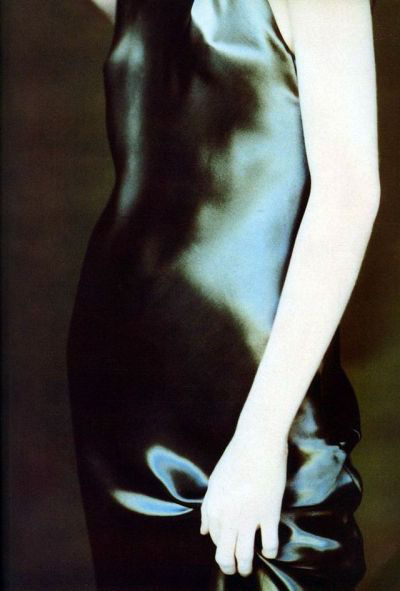

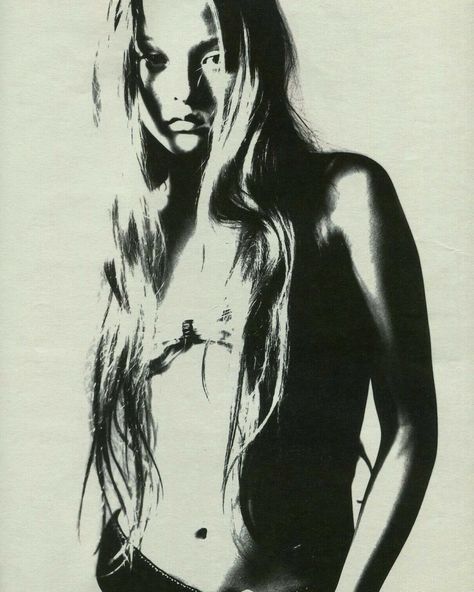
-
8. Petra Collins (1992 - )
Petra Collins is a Canadian artist who is best known as a photographer but also is a director, fashion model, and actor. Her photography is described as dreamlike and feminine. She rose to popularity in the 2010s as she was the resident photographer for the rookie magazine. She has directed short films and music videos for artists like Selena Gomez, Olivia Rodrigo, Carly Rae Jepson, and Lil Yachty. She’s been labeled as an IT girl and was also the face of Gucci in 2016. Her career started with Richard Kern who took on the role of her mentor, she also then went on to become Ryan Mcginley’s protegee before building up her own work. She is also someone that writes articles/essays.

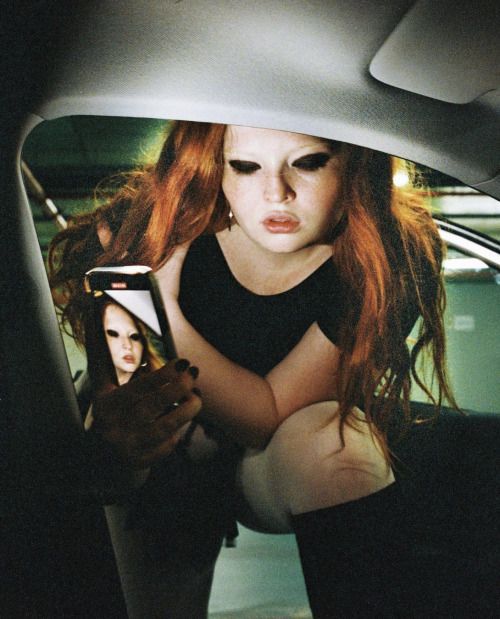
-
9. Vewn (1999 -)
Vewn or Victoria Vincent is an American artist and 2d animator. She is a content creator who uses Vimeo and youtube to showcase her animations that tell her stories. She created illustrations and comic strips and uses unique colours and distorted angles from which the audience views her work. She is relatively She is self-taught and has been on the YouTube platform since 2015, her exact origins are unknown. Her videos however have been a part of media outlets like Huffington Post, Buzzfeed, and Teen Vogue.

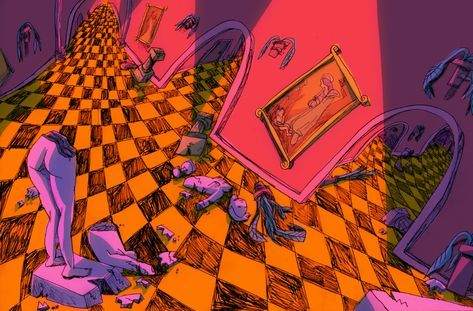

-
10. Clare Caulfield
Clare Caulfield is an artist and printmaker. She likes to travel around the world, and this serves as her main inspiration and source material in her work. She likes to screen print as it allows her to transfer her sketchbook drawings which she usually draws on-site to bigger canvases - she likes the sense of spontaneity this allows. She uses a variety of methods and techniques like pen, watercolour, acrylic, pencil, and collage as well. Her work can be bought online but she also often exhibits it in galleries. She has cited that one of her inspirations is Stephen Wilshire.


-
18 notes
·
View notes
Note
If you’re still answering the movie asks… numbers 36 and 39 ☺️
36. which movie star would you want to meet?
If I had to answer this in an honest way, I'd say "none!", because due to being the hopeless fangirl that I am, encounters like these would be embarrassing and uncomfortable for all parties involved 🤠
But if I had to choose, I of course would show my best and most calm side and would love to meet these two (I know, again two, but I just don't want to choose):
Shah Rukh Khan, since he's the childhood/teen crush and hero for me. I inhaled his Bollywood movies back then and still am so attatched to him in a nostalgic way 🤗 Would most likely just want to tell him how much joy his movies brought me, how much the music of this movies shaped me and how much he was a part of my growing up process.

And of course, no surprises here, the fine gentleman that is Hugo Weaving 🤲🏼 He also was a big part of my teen years since he was part of my favourite movie, and later now became such a hyperfixation :') Would probably love to talk with him about his work on australian movies and theatre pieces as well as just... would beg him to read audiobooks because I need his voice in my life more.

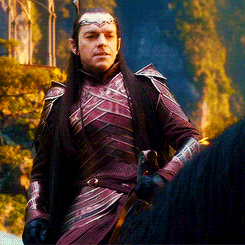
39. in your opinion what is the most underrated movie?
(Maybe not underrated but just not known enough/not talked about enough anymore):
Going absolutely full blown German mode here and say every movie made by the German movie director Rainer Werner Fassbinder. He was known for his provocative and often controversial films that explored themes of alienation, sexuality, and social critique, and really shaped the New German cinema movement in the 1960s and 1970s. Fassbinder's works often depicted the struggles of people (oftentimes marginalized groups) in post-war Germany; very heavy and sad movies without being overly dramatic.
I recommend especially 'Ali: Fear eats the soul' ('Angst essen Seele auf'; so. SO. good), 'Martha' and 'The marriage of Maria Braun' ('Die Ehe der Maria Braun').
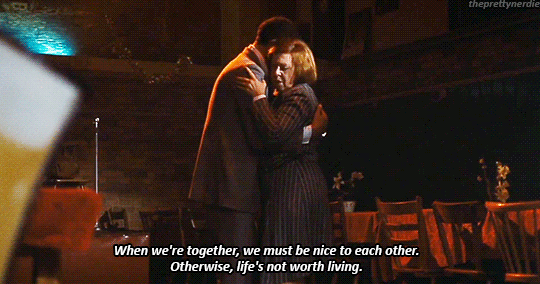
2 notes
·
View notes
Text
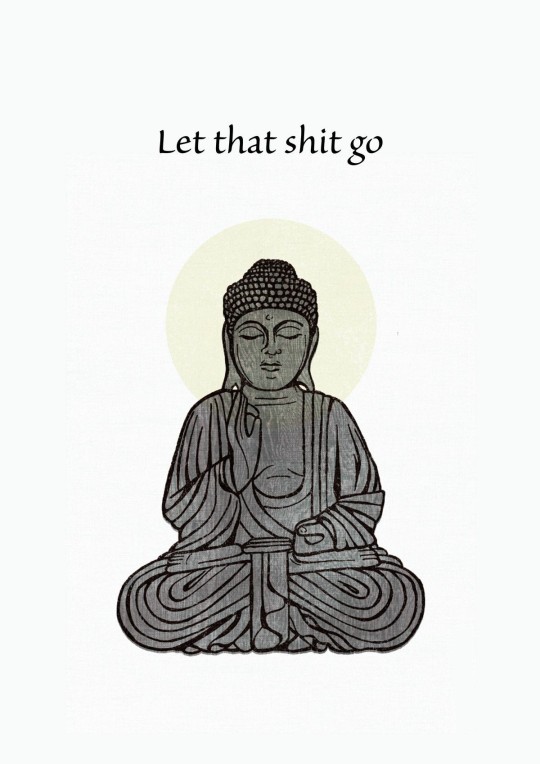
Good morning! I hope you slept well and feel rested? Currently sitting at my desk, in my study, attired only in my blue towelling robe, enjoying my first cuppa of the day.
Welcome to Too Much Information Tuesday.
It is illegal to be drunk in a UK pub.
We forget 80% of what we learn every day.
HP Printer black ink is more expensive than human blood.
Strawberries actually contain more vitamin C than oranges.
60% of the alcohol in America is drunk by 10% of the people.
American plumbers refer to the day after Thanksgiving as Brown Friday.
In 2021, the investor community on Reddit adopted 3,500 gorillas in a week.
By 2050, 3.3% of the world’s population will be millionaires (in US dollars.)
In general, the more time you spend with someone, the more you will like them.
Rats emit ultrasonic squeaks of happiness when they get to hang out with another rat.
A cyberchondriac is someone who scours the internet looking for details of their illnesses.
The presence of CCTV cameras increases the fear of crime but doesn’t reduce crime rates.
Not one but two cross-country skiers suffered from a frozen penis during a recent world cup race.
If you keep going North, you will eventually go South, but if you keep going East, you will never go West.
Coffee drunk from a white mug tastes more intense and less sweet than coffee drunk from a clear mug.
Stomach rumblings are caused by air moving through your digestive tract and doesn’t always mean you are hungry.
AI can guess your age, location, gender and income with up to 85% accuracy by analysing your social media posts.
A sophomaniac is a person who’s under the delusion that they are extremely intelligent. Too many of them about!
Memorizing the lyrics to songs can help strengthen your brain and reduce the risk of Alzheimer’s. Do more karaoke!
King Harold didn't die at the battle of Hastings from an arrow in the eye, he was hacked apart by four Norman knights.
Listening to loud music interferes with your vision. This is why we usually turn the car radio down when looking for somewhere to park.
Negaholics are people who become addicted to self-doubt and negativity. They find the bad in most things and are hardly ever satisfied.
The directors of ‘Despicable Me’ actually wrote a language for the gibberish the minions speak throughout the film. Each word has a meaning!
The company that made the modelling clay for Wallace & Gromit has gone out of business. There is currently only enough clay for one more film.
The first BBC radio presenter with a Northern accent was hired in the second world war to make it harder for the Germans to produce fake news bulletins.
The peanut is not a nut, it is actually a legume. A legume refers to any plant from the Fabaceae family that would include its leaves, stems and pods.
It’s a myth that you only use 10% of your brain. Most of your brain is active almost all of the time. The problem is: some people don’t have much in there!
An American on the national average salary would have to work for 21,000 years before they became a billionaire, assuming that they spent none of their money.
A Crook County, Wyoming, judge has dismissed property destruction charges against a pair of ranchers accused of bleaching penis shapes and other markings on their neighbour’s cows.
In 2011, a 25-year-old Spanish man sued his parents for refusing to give him money unless he tried to find a job. The court denied his claim and ordered him to leave his parents’ house and find a job.
The Sound of Music was so popular in South Korea when it was first released that one cinema owner decided to shorten the film by cutting all the musical pieces from it so they could show it more often.
In 1962, Brendon Grimshaw purchased Moyenne Island in the Seychelles for £8000. He planted 16,000 trees on the island, brought and bred giant tortoises, and introduced a variety of bird life. He was the sole inhabitant of the island until his death in 2012. Instead of selling it, he declared the island a national park.
‘Malleus Maleficarum’, a 15th century witch-hunting manual, described how witches kept ‘live’ wriggling penises as pets. The witches were said to have kept the penises in nests in trees and to have fed them oats. Written by Catholic clergyman Heinrich Kramer, ‘Malleus Maleficarum’ is of course today regarded as misogynistic nonsense. However, centuries ago, such books would have resulted in the gruesome murders of women accused of being witches.
Okay, that’s enough information for one day. Have a tremendous and tumultuous Tuesday! I love you all.
4 notes
·
View notes
Text
Max the War Correspondent and Private Chloe
“Show me your war face, private Price!” – said Max Caulfield, the war correspondent for “Seattle Post-Intelligencer”.
It was September 1944, a rural area somewhere in Belgium. Max had been sent to photograph the brave boys and girls fighting to liberate Europe. She was assigned a junior staff officer, Alyssa Anderson, who drove her around from one unit to another, so that she could take pictures. It was important to keep the public’s support for the war effort high and photo ops like that were a way to achieve that.
Max tried to photograph as many soldiers as she could. They all deserved to be remembered for their bravery, for their part in the fight against evil. But when she met private Price, she decided not to save her camera film that one time and to expend an entire roll on an impromptu photo session. The other soldiers watched this, giggling, clearly seeing that private Price caught the eye of the gorgeous brunette war correspondent.
Chloe attempted to make a scary face, but the effect made Max laugh. Chloe was way too adorable to be making convincing war faces. Max snapped the last picture, fully expending the roll of film. The photo session was a success. Private Chloe saluting. Private Chloe in full panoply of war, presenting arms. Private Chloe resting her foot on a German helmet with a bullet hole in it. Private Chloe smiling, short strands of her strawberry blonde hair escaping from beneath her helmet.
Chloe approached Max.
“So, Miss Caulfield …”
“Call me Max”.
“Max … Are you really going to publish your photographs of me? Or is it just something you tell all the girls to make them like you?”
Max smiled at her joke. And blushed a little.
“When I get back home, I’m going to give all the photos to my editor. He’s going to decide whose pictures get published. But you can bet I’m going to recommend yours”.
“Your paper is from Seattle, right? And where are you from?”
“Oregon. Tiny town called Arcadia Bay. You’ve probably never heard of it”.
Chloe became visibly animated: “Arcadia Bay? No way! That’s where I’m from, too. And tiny town? Look at miss big city over here! There’s everything there one could possibly need. A cinema, a library, a diner, two different grocery stores, a gas station and an auto repair centre. That’s where I used to work. I used to be a car mechanic before I was conscripted. I hope they will still have work for me when I get back home”.
Max would love to show her around Seattle, with its multiple cinemas and multiple libraries, not to mention other establishments, like theatres and restaurants, where two young gals could spend some quality time.
“I didn’t mean it like that, Chloe. I didn’t hate Arcadia Bay. I left when I was a kid because my father found work in Seattle. City life is … different. Not necessarily better, but different”.
“Don’t worry about it, I was just busting your ladyballs, Max”.
“Chloe, I know we’ve just met, but …”
A piercing whizz announced the arrival of a mortar shell. Chloe grabbed Max in her arms and they both fell to the ground, with Chloe on top. While Chloe was very skinny, her gear made her quite heavy. The shell exploded nearby. Chloe felt a piece of shrapnel hitting her back. She rolled off Max.
“Are you okay, Max?”
“Of course I am. You shielded me with your own body! Thank you!”
“Uncle Sam is always happy to help his citizens”.
“Chloe, but what about you?”
“I … don’t know. I felt something hit my back. Can you take a look, Max?”
Max felt her heart drop. But when she looked at Chloe’s back, she instantly felt relieved.
“You’re okay, Chloe. The shrapnel hit your backpack and it was caught by your canteen. You won’t be able to eat soup, but you’ll live”.
“With how unappetizing our rations are, my health is set to improve”.
Max giggled.
Commander of the unit, lieutenant Madsen, barked orders: “Take positions! They are coming! You too, Price! Up and at them!”
Gunshots and explosions signified the incoming battle.
Max knew she had only one shot at this.
Before private Price had a chance to get up and head towards the firefight, Max placed her hands on Chloe’s cheeks, turned her face towards her and kissed her lips. At first Chloe was surprised, but she quickly began to kiss her back.
“I’m going to write you, Chloe. And after the war, come find me. You know where I work”.
Alyssa dragged Max away to the jeep. Chloe looked at Max dreamingly for a moment, having finally realized who she was fighting for. Then she ran to join her comrades in battle.
After two years and dozens of letters, one snowy afternoon Max left the offices of the “Seattle Post-Intelligencer” and to her surprise saw Chloe standing outside. She ran to embrace and kiss her.
“In your last letter you didn’t mention you were finally going to be discharged!”
“In the army they taught us that the element of surprise is crucial”.
“Come, private Price. Let me show you big city life”.
#chloe price#max caulfield#pricefield#life is strange#lis#life is strange fanfiction#fanfiction#alternate universe#AU
4 notes
·
View notes
Text
Cinema Studies Minor Gets Super Into Analyzing K-Pop Videos 2.1
Disclaimer: I'm still a student, no where near an expert, I will be wrong in some technical aspects. Also my interpretations are my opinion which means you may disagree and that's okay. Awesome even! Just be normal about it fr. This is also very out of order bc that's how my brain works. Also I am but a baby loretiny, which means my interpretations are shaky at best compared to what's been established. But the lore is confusing anyway so....
The World EP.FIN: Trailer Analysis pt 1: Sections
Why Not Film?
K-Pop's Obsession with Wong Kar-Wai
Ateez and Metropolis
Why Not Film?
I mean like filming on film stock. Because there is a film grain/noise... (overlay? mask? idk man i'm not an editor I forgot my terms) texture to parts of the video that I think is supposed to evoke the idea of a security camera (I would have LOVED some high-angle shots to drive this home but oh well) BUT could also just be representing that it's old/in the past because it is also in black and white.
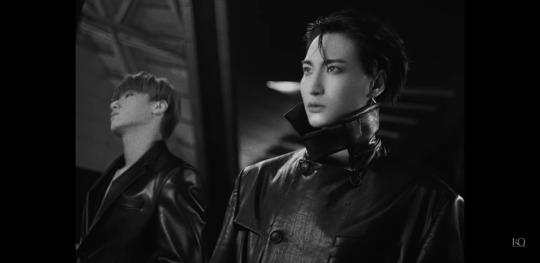
the texture is especially evident on San's face. I think they just put a noise filter over this part, which creates grain that you'd find on old film
So why not just film on film stock? It's expensive and cumbersome my guy. they filmed this between schedules like.... digital editing and stuff is just so much easier.
Which leads me to the next section:
K-Pop's Obsession with Wong Kar-Wai
STEP PRINTING!!!! 8/10FPS!!!!! STREAKS!!!! WE! LOVE! IT!
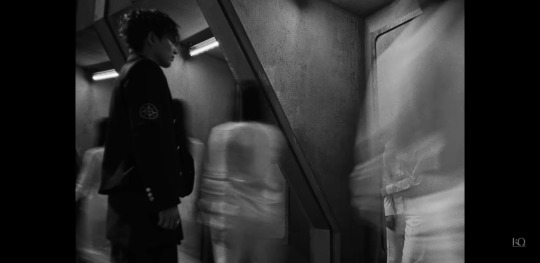
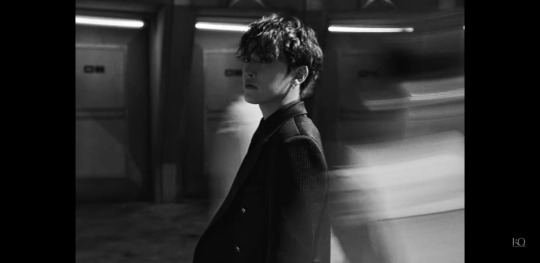
I fucking love this effect which WKW first did by filming (on stock) at 8 frames per second (fps) and then repeating the same frame 3 times to create that streakiness. Filming at a low frame rate then playing it at a higher one (usually 24 fps, which I'm guessing is also what they used for this trailer, 24-32(ish) fps is the cinematic standard) creates fast motion. This process is called step-printing.
The subject(s) would stay still/ move very slowly while filming to give the effect that everything is moving fast around them while they're normal speed. Super cool, gives sense that time is passing around them and/or isolation from others, which is what I think is intended here since HJ and the teezers are isolated from society as they're trying to fight against the government. sweet sweet storytelling through style. OBSESSED!
Here is an example from Chungking Express:

But also: K-Pop in general is OBSESSED with WKW's style. I will make a list of MVs that rep that eventually, but off the top my head, Mamamoo's mv for wind flower is inspired by Fallen Angels. The color grading, cinematography, the scene references etc.
Ateez and Metropolis
Now for something completely different: Before I get into it I really want to emphasize how fucking instrumental cinema was in globalization, because when cinema first became an industry it TRAVELED like TRAVELED. and resulted in a mix of styles since the fucking like 1920s. AMAZING
Okay so speaking of 1920s, let's get into IT! German Expressionism was a film movement that was born out of post-WW1 Germany and society's need to express (ha) the horrors of war they went through and since hyperinflation fucked up the economy so much, film companies were like "spend whatever" and blew budget on super elaborate film sets and facilities.
Expressionism is focused on the physical and really emphasizing features and such. It's hyperbolic as show in the screen shot from The Cabinet of Dr. Caligari:
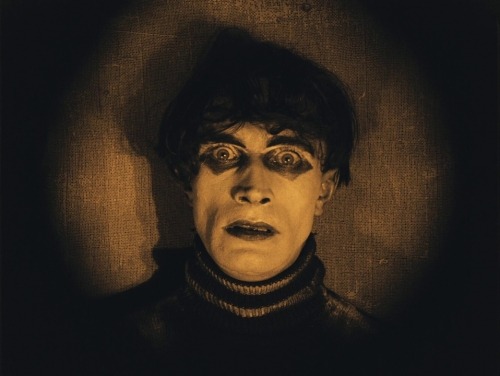
The subject's face is deepened by the make-up and lighting and shows their state of mind, a mindless corpse being controlled by another power (think Master/Puppet, but we don't have time to rly get into post WW1 Ger's anxieties)
It's also hyperbolic, as I said, which sometimes takes form in the sets. Specifically the establishing shots. These would traditionally be miniatures or painted, as they are easy and you can see how they're similar:
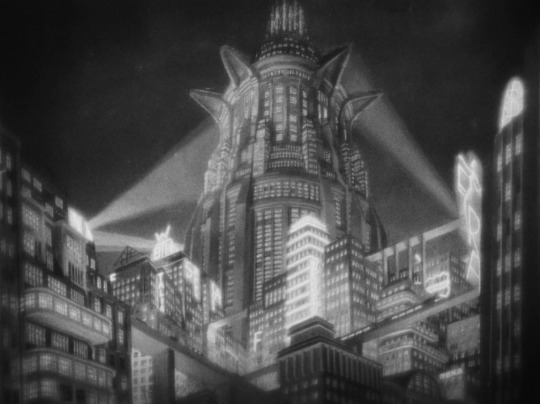
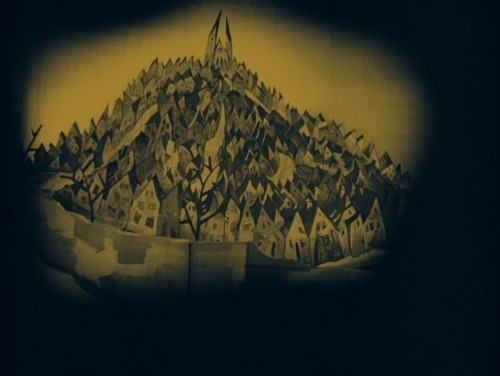
1- Metropolis & 2- The Cabinet of Dr. Caligari
Notice anything? The lines maybe? Perspective? Symmetry? These are all qualities seen in German Expressionism which I will get into in a momement but first. Let me explain why I use Metropolis as an example. In short, they already referenced it in Guerrilla:

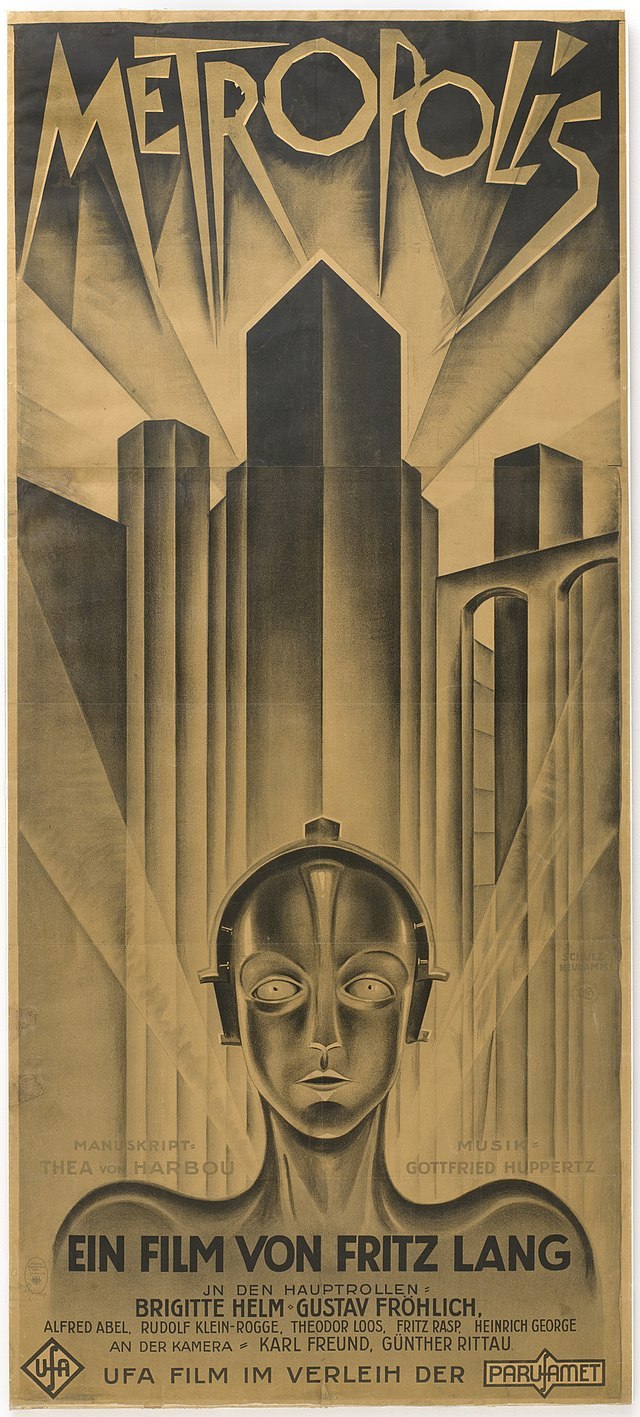
click to get the whole picture! Guerrilla MV and the film poster for Metropolis, the book cover is similar.
See the lines and perspective? The establishing shot at the beginning is the same, let's compare it to Metropolis again:
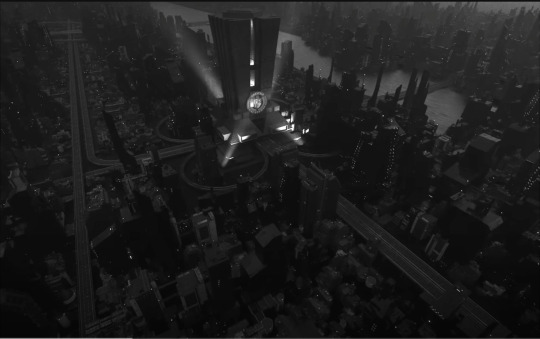
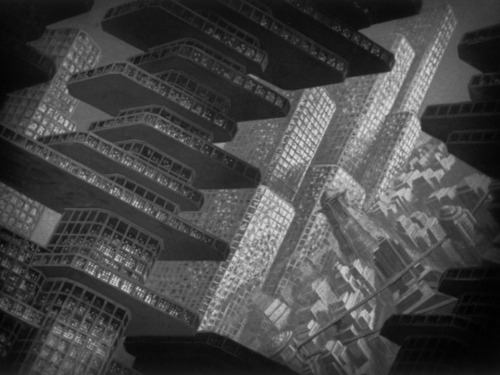
THE WORLD: EP.FIN Trailer & Metropolis
German expressionism is alive and well in film style and I'm so in love with how the director utilizes it.
Next, we're going to talk about structure and lines, along with style and how it helps the narrative.
[TO BE CONTINUED]
3 notes
·
View notes